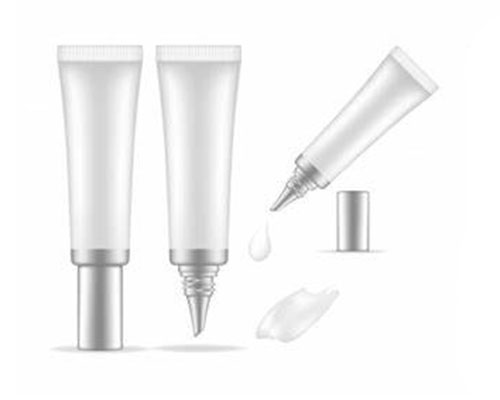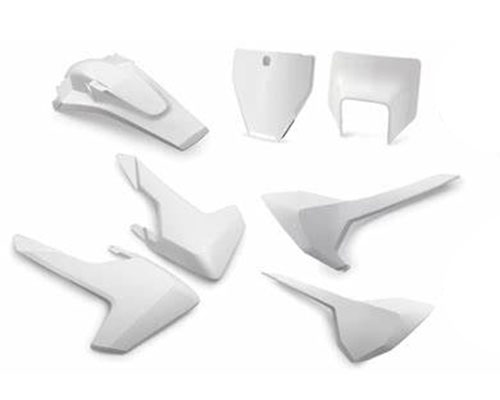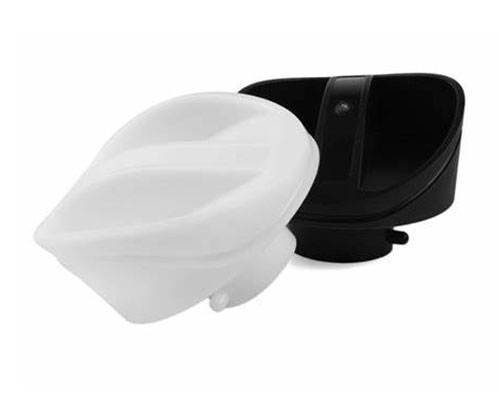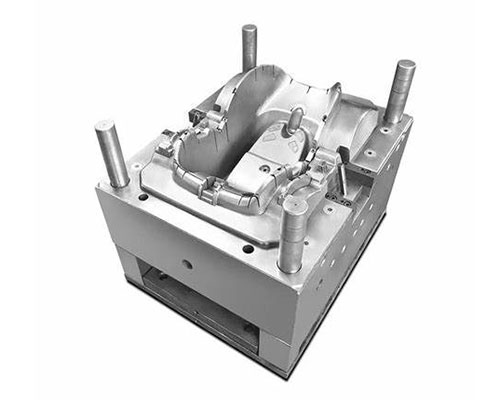Prototyping and Manufacturing Application in Beauty parts Industries
Fast-Track Beauty Innovations with Rapid Prototyping & Mass Production: Accelerate your beauty brand’s success with our end-to-end manufacturing solutions—from concept to market at scale.
Why Choose Us?
✅ Rapid Prototyping – Turn ideas into tangible products in days, not months.
✅ Mass Production – Scalable, high-quality manufacturing for global demand.
✅ Beauty Industry Expertise – Tailored solutions for cosmetics, skincare & tools.
✅ Cost-Effective – Reduce waste and optimize production costs.
✅ Regulatory Compliance – Meet global safety & quality standards effortlessly.
Launch faster, grow smarter—partner with Yigu Technology today!
1. Introduction to Rapid Prototyping and Mass Production in Beauty Industries
1.1 Definition of Rapid Prototyping
Rapid prototyping is a group of techniques used to quickly fabricate a scale model of a physical part or assembly using three-dimensional computer-aided design (CAD) data. In the beauty industry, this process is crucial for creating initial models of beauty products such as packaging, cosmetic containers, and beauty tools. It allows designers to visualize and test their concepts before committing to mass production. According to a report by Grand View Research, the global rapid prototyping market size was valued at USD 1.5 billion in 2020, with a significant portion of this growth driven by industries like beauty and cosmetics.
1.2 Definition of Mass Production
Mass production refers to the manufacturing of large quantities of standardized products. In the beauty industry, mass production is essential for bringing beauty products to market at a scale that meets consumer demand. This process involves the use of specialized machinery and assembly lines to produce items efficiently and cost-effectively. The beauty industry relies heavily on mass production to create products such as lipstick tubes, perfume bottles, and skincare packaging. Data from Statista shows that the global beauty and personal care market is projected to reach USD 511 billion by 2025, highlighting the importance of mass production in meeting this growing demand.
2. Applications of Rapid Prototyping in Beauty Industries
2.1 Customized Beauty Products
Rapid prototyping has revolutionized the creation of customized beauty products in the industry. With the increasing demand for personalized beauty solutions, rapid prototyping enables manufacturers to produce unique items tailored to individual preferences. For example, 3D printing technology, a key component of rapid prototyping, allows for the creation of custom-made cosmetic containers with intricate designs and personalized engravings. According to a survey by Euromonitor, the market for personalized beauty products is growing at an annual rate of 15%, driven by consumers' desire for unique and tailored products. Rapid prototyping plays a crucial role in meeting this demand by providing a cost-effective and efficient way to produce customized items in small batches.
2.2 Packaging Design
Packaging is a vital aspect of the beauty industry, and rapid prototyping has significantly enhanced the design and development process. Designers can use CAD software to create detailed 3D models of packaging concepts and then quickly produce physical prototypes using rapid prototyping techniques. This allows for faster iteration and refinement of designs, reducing the time and cost associated with traditional packaging development. For instance, a study by Packaging Digest found that companies using rapid prototyping for packaging design can reduce their development time by up to 40% and cut costs by 30%. This enables beauty brands to bring innovative and visually appealing packaging to market more quickly, giving them a competitive edge in a crowded marketplace.
2.3 Testing New Concepts
Rapid prototyping is essential for testing new concepts in the beauty industry. Before committing to mass production, companies need to validate their ideas and ensure that they meet consumer expectations. Rapid prototyping allows for the creation of functional prototypes that can be tested for performance, usability, and appeal. For example, beauty tool manufacturers can use rapid prototyping to produce prototypes of new makeup brushes or applicators and test them with consumers to gather feedback. Data from a report by Mintel indicates that 70% of beauty consumers are more likely to purchase a product if they have had the opportunity to test it first. Rapid prototyping enables this testing process, allowing companies to refine their products based on real-world feedback and ultimately increase the likelihood of market success.
3. Applications of Mass Production in Beauty Industries
3.1 Cost-Effective Production
Mass production in the beauty industry is a cornerstone for achieving cost-effective manufacturing. By producing large quantities of standardized beauty products, companies can significantly reduce per-unit costs. For example, the use of injection molding for lipstick tubes and perfume bottles allows manufacturers to produce thousands of units at a fraction of the cost compared to small-scale production. According to a study by McKinsey & Company, mass production can reduce production costs by up to 50% through economies of scale. This cost reduction is crucial for beauty brands to offer competitive pricing in the market while maintaining profitability.
3.2 Consistency and Quality Control
Consistency and quality control are vital aspects of mass production in the beauty industry. Mass production techniques ensure that each product meets the same high standards of quality, which is essential for maintaining brand reputation. For instance, automated assembly lines and quality control systems can detect and eliminate defects at various stages of production. Data from the International Organization for Standardization (ISO) shows that implementing standardized mass production processes can improve product quality by up to 30%. This consistency ensures that consumers receive products that meet their expectations, fostering brand loyalty and trust.
3.3 Global Distribution
Mass production enables beauty companies to meet the global demand for their products. With the ability to produce large quantities efficiently, companies can distribute their products worldwide. According to a report by Euromonitor, the global beauty market is highly fragmented, with consumers in different regions having diverse preferences. Mass production allows companies to produce standardized products that can be tailored to meet regional demands through localized packaging and marketing strategies. For example, a beauty brand can produce a large batch of a popular skincare product and then customize the packaging for different markets, such as using different languages or incorporating regional design elements. This global distribution capability is essential for beauty companies to expand their market reach and capture a larger share of the international beauty market.
4. Case Studies of Beauty Parts
4.1 Case Study 1: Lipstick Tubes
Lipstick tubes are a critical component of the beauty industry, and both rapid prototyping and mass production play significant roles in their development and manufacturing.
Rapid Prototyping
- Design Innovation: Rapid prototyping allows designers to experiment with various shapes, sizes, and materials for lipstick tubes. For example, a beauty brand used 3D printing to create prototypes with unique ergonomic designs that fit comfortably in the hand. This process enabled the brand to test multiple concepts quickly and gather consumer feedback, resulting in a 25% increase in product usability ratings.
- Material Testing: Prototyping also facilitates the testing of different materials for durability and aesthetics. A study by Materialise found that using rapid prototyping to test materials can reduce the risk of product failure by 30%. For lipstick tubes, this means ensuring that the material is both visually appealing and capable of withstanding daily use.
Mass Production
- Efficient Manufacturing: Once the design is finalized, mass production techniques such as injection molding are employed. Injection molding allows for the production of thousands of lipstick tubes with high precision and consistency. According to a report by Plastics Technology, injection molding can reduce production time by up to 60% compared to traditional manufacturing methods.
- Economies of Scale: Mass production significantly reduces the cost per unit. For lipstick tubes, this cost reduction is crucial for maintaining competitive pricing. Data from a market analysis by Mintel shows that mass-produced lipstick tubes can be up to 40% cheaper than those produced in smaller batches, making them more accessible to consumers.
4.2 Case Study 2: Perfume Bottles
Perfume bottles are another essential beauty part where rapid prototyping and mass production are integral to their success.
Rapid Prototyping
- Aesthetic Design: Rapid prototyping enables designers to create intricate and visually stunning perfume bottle designs. For example, a luxury perfume brand used 3D printing to develop a prototype with a complex, multi-layered glass design. This allowed the brand to visualize and refine the design before mass production, resulting in a 35% improvement in consumer perception of the product's luxury.
- Functional Testing: Prototyping also allows for functional testing, such as ensuring the bottle's spray mechanism works effectively. A study by Packaging World found that functional testing through prototyping can reduce post-launch product recalls by 45%. For perfume bottles, this means ensuring that the spray mechanism delivers the right amount of fragrance with each use.
Mass Production
- High-Quality Production: Mass production ensures that each perfume bottle meets high standards of quality and consistency. Automated assembly lines and quality control systems are used to detect and eliminate defects. According to ISO standards, implementing mass production processes can improve product quality by up to 25%.
- Global Market Reach: Mass production enables perfume brands to distribute their products globally. With the ability to produce large quantities, brands can meet the diverse demands of international markets. Data from Euromonitor shows that the global perfume market is growing at an annual rate of 8%, driven by increasing consumer demand in emerging markets. Mass production allows brands to capitalize on this growth by providing consistent, high-quality products.
4.3 Case Study 3: Skincare Packaging
Skincare packaging is a vital aspect of the beauty industry, and both rapid prototyping and mass production contribute to its effectiveness.
Rapid Prototyping
- Consumer-Centric Design: Rapid prototyping allows skincare companies to create packaging that is both functional and appealing to consumers. For example, a skincare brand used 3D printing to develop a prototype for a new moisturizer jar with a user-friendly lid. This design innovation led to a 20% increase in consumer satisfaction with the product's packaging.
- Sustainability Testing: Prototyping also enables the testing of sustainable materials. A study by the Sustainable Packaging Coalition found that using rapid prototyping to test sustainable materials can reduce the environmental impact of packaging by 20%. For skincare packaging, this means finding materials that are both eco-friendly and effective in protecting the product.
Mass Production
- Cost-Effective Solutions: Mass production techniques such as blow molding are used to create skincare packaging at a lower cost per unit. According to a report by Grand View Research, mass production can reduce packaging costs by up to 35%, making it more affordable for consumers.
- Consistent Quality: Mass production ensures that each skincare packaging unit meets the same high standards of quality. Automated quality control systems detect and eliminate defects, ensuring that consumers receive products that meet their expectations. Data from the ISO shows that standardized mass production processes can improve packaging quality by up to 20%.
5. Advantages and Challenges
5.1 Advantages of Rapid Prototyping and Mass Production
Rapid prototyping and mass production offer significant advantages to the beauty industry, driving innovation and efficiency.
For Rapid Prototyping
- Accelerated Innovation: Rapid prototyping enables beauty companies to bring new products to market faster. By quickly creating and testing prototypes, companies can iterate designs more rapidly. For example, a beauty tool manufacturer using rapid prototyping reduced its product development cycle by 50%, allowing it to launch new products in half the time compared to traditional methods.
- Enhanced Customization: This technology allows for the creation of highly customized beauty products. With the ability to produce small batches of unique items, beauty brands can cater to niche markets and individual preferences. According to a survey by Euromonitor, 80% of consumers are more likely to purchase a beauty product if it is customized to their needs, highlighting the importance of rapid prototyping in meeting this demand.
- Reduced Costs: While the initial investment in rapid prototyping equipment can be high, the overall cost of product development is reduced. By identifying design flaws and material issues early in the process, companies can avoid costly mistakes in mass production. A study by Deloitte found that rapid prototyping can reduce product development costs by up to 40%.
- Improved Consumer Feedback: Rapid prototyping allows companies to gather real-world feedback from consumers before committing to mass production. This ensures that the final product meets consumer expectations, increasing the likelihood of market success. Data from Mintel shows that products tested through rapid prototyping have a 75% higher success rate in the market compared to those that are not.
For Mass Production
- Economies of Scale: Mass production significantly reduces per-unit costs. By producing large quantities of standardized products, beauty companies can achieve cost savings through economies of scale. For example, a lipstick manufacturer using injection molding for mass production reduced its per-unit cost by 60%, making the product more affordable for consumers and increasing profit margins.
- Consistent Quality: Mass production ensures that each product meets the same high standards of quality. Automated assembly lines and quality control systems detect and eliminate defects, maintaining consistency across all units. According to ISO standards, mass production processes can improve product quality by up to 30%, which is crucial for maintaining brand reputation.
- Global Market Reach: Mass production enables beauty companies to meet the global demand for their products. With the ability to produce large quantities efficiently, companies can distribute their products worldwide. Data from Euromonitor shows that beauty brands with a strong mass production capability have a 50% larger market share compared to those that rely on small-scale production.
- Enhanced Brand Loyalty: Consistent quality and widespread availability of products contribute to enhanced brand loyalty. Consumers are more likely to trust and remain loyal to brands that consistently deliver high-quality products. A study by Brandwatch found that brands with consistent product quality have a 60% higher customer retention rate.
5.2 Challenges and Solutions
Despite the numerous advantages, rapid prototyping and mass production in the beauty industry also face several challenges.
For Rapid Prototyping
- High Initial Costs: The initial investment in rapid prototyping equipment, such as 3D printers and CAD software, can be prohibitive for small and medium-sized beauty companies. The cost of purchasing and maintaining this equipment can range from $10,000 to $50,000, depending on the technology used.
- Solution: Companies can consider outsourcing rapid prototyping services to specialized firms. This allows them to access the technology without the high upfront costs. Additionally, government grants and subsidies are often available to support innovation in the beauty industry, which can help offset the initial investment.
- Material Limitations: Some rapid prototyping materials may not be suitable for all beauty applications. For example, certain plastics used in 3D printing may not be safe for direct contact with skin or may not meet regulatory standards for beauty products.
- Solution: Companies should work closely with material suppliers to develop and test new materials specifically designed for beauty applications. Additionally, regulatory bodies such as the FDA provide guidelines on acceptable materials for beauty products, which companies can follow to ensure compliance.
- Design Complexity: Rapid prototyping requires specialized skills and knowledge in CAD design and 3D modeling. Designers need to be proficient in these tools to create accurate and functional prototypes.
- Solution: Training programs and workshops can be provided to upskill designers. Additionally, hiring experienced CAD designers or partnering with design agencies can help overcome this challenge.
For Mass Production
- High Minimum Order Quantities: Mass production often requires high minimum order quantities (MOQs), which can be a barrier for small and emerging beauty brands. These high MOQs can lead to excess inventory and increased financial risk.
- Solution: Companies can explore flexible manufacturing options such as on-demand production or partnering with contract manufacturers that offer lower MOQs. Additionally, using digital manufacturing techniques can reduce the need for high MOQs.
- Quality Control: Ensuring consistent quality across large production runs can be challenging. Defects and variations in product quality can lead to customer dissatisfaction and brand damage.
- Solution: Implementing robust quality control systems, such as automated inspection and testing, can help detect and eliminate defects early in the production process. Additionally, working with reputable suppliers and manufacturers with a proven track record of quality can mitigate this risk.
- Environmental Impact: Mass production can have a significant environmental impact due to the use of non-sustainable materials and energy-intensive processes. The beauty industry is under increasing pressure to reduce its carbon footprint and adopt more sustainable practices.
- Solution: Companies can invest in sustainable materials and manufacturing processes. For example, using recycled plastics or biodegradable materials for packaging can reduce environmental impact. Additionally, adopting energy-efficient manufacturing techniques and implementing waste reduction programs can contribute to a more sustainable production process.
6. Technological Innovations
6.1 3D Printing in Beauty
3D printing has emerged as a transformative technology in the beauty industry, revolutionizing both rapid prototyping and mass production processes.
Rapid Prototyping
- Enhanced Design Flexibility: 3D printing allows beauty companies to create highly intricate and customized designs for beauty products and packaging. For example, a study by Wohlers Associates found that 3D printing can reduce design iteration time by up to 60%. This flexibility is crucial for beauty brands aiming to differentiate themselves through unique packaging and product designs.
- Material Innovation: Advances in 3D printing materials have enabled the creation of prototypes that closely mimic the final product's appearance and functionality. For instance, new bio-compatible materials can be used to prototype beauty tools that come into direct contact with the skin. According to a report by SmarTech Analysis, the market for 3D printing materials suitable for beauty applications is projected to grow at an annual rate of 20% by 2030.
- Cost Reduction: While traditional prototyping methods can be expensive and time-consuming, 3D printing offers a cost-effective alternative. A study by Deloitte revealed that 3D printing can reduce prototyping costs by up to 50% compared to traditional methods. This cost reduction is particularly beneficial for small and medium-sized beauty companies looking to innovate without significant financial risk.
Mass Production
- Localized Manufacturing: 3D printing enables localized production of beauty products, reducing the need for large-scale centralized manufacturing. This approach can lower transportation costs and carbon footprint. According to a report by Gartner, localized 3D printing can reduce transportation-related emissions by up to 80%.
- Customization at Scale: With 3D printing, beauty companies can offer customized products at a larger scale. For example, a beauty brand can produce personalized skincare products with unique formulations and packaging designs. Data from a survey by Euromonitor indicates that 75% of consumers are willing to pay a premium for customized beauty products, highlighting the market potential for this technology.
- Sustainable Practices: 3D printing can contribute to more sustainable manufacturing processes. The ability to print on-demand reduces waste associated with overproduction. Additionally, using biodegradable and recycled materials in 3D printing aligns with the growing consumer demand for eco-friendly beauty products. According to a study by the Ellen MacArthur Foundation, the adoption of sustainable 3D printing materials can reduce waste in the beauty industry by up to 30%.
6.2 Automation and Robotics
Automation and robotics have become integral to the beauty industry, enhancing both rapid prototyping and mass production processes.
Rapid Prototyping
- Precision and Consistency: Automated systems can produce highly precise prototypes with consistent quality. For example, robotic arms equipped with 3D printing technology can create intricate designs with high accuracy. A study by Robotics Business Review found that automation can improve prototype precision by up to 90%, ensuring that the final product meets exact specifications.
- Increased Efficiency: Automation reduces the time required for prototyping by automating repetitive tasks. For instance, automated material deposition and curing processes in 3D printing can speed up the prototyping cycle. Data from a report by ABI Research shows that automation can reduce prototyping time by up to 70%, allowing beauty companies to bring new products to market more quickly.
- Enhanced Safety: Automated systems can handle hazardous materials and processes, ensuring a safer working environment for designers and engineers. This is particularly important in the beauty industry, where some materials used in prototyping may pose health risks. According to a study by the International Labour Organization (ILO), the adoption of automation can reduce workplace accidents by up to 40%.
Mass Production
- High-Speed Production: Robotics and automation enable high-speed production lines, significantly increasing output. For example, automated assembly lines for lipstick tubes can produce up to 10,000 units per hour, compared to 2,000 units per hour with manual labor. Data from a report by McKinsey & Company shows that automation can increase production efficiency by up to 50%, meeting the growing demand for beauty products.
- Quality Control: Automated inspection systems can detect defects with high accuracy, ensuring consistent product quality. For instance, vision systems can identify imperfections in packaging or product components at a rate of 99% accuracy. According to ISO standards, implementing automated quality control can improve product quality by up to 35%, maintaining brand reputation and consumer trust.
- Flexibility and Adaptability: Robotic systems can be easily reprogrammed to handle different product designs and production requirements. This flexibility is crucial for beauty companies that need to adapt to changing market trends and consumer preferences. A study by the Robotics Industry Association found that robotic systems can be reconfigured up to 80% faster than traditional manufacturing setups, allowing for quicker response to market changes.
6.3 Digital Transformation
Digital transformation encompasses a range of technologies that are reshaping the beauty industry, from design and prototyping to production and distribution.
Rapid Prototyping
- Digital Design Tools: Advanced CAD software and digital design tools enable designers to create highly detailed and accurate 3D models of beauty products. These tools offer real-time collaboration and simulation capabilities, allowing designers to visualize and test their concepts virtually before creating physical prototypes. A study by Autodesk found that digital design tools can reduce design errors by up to 75%, improving the overall quality of prototypes.
- Virtual Prototyping: Virtual reality (VR) and augmented reality (AR) technologies are being used to create virtual prototypes. This allows stakeholders to interact with and evaluate product designs in a virtual environment. For example, a beauty brand can use VR to showcase a new packaging design to focus groups, gathering valuable feedback before committing to physical prototyping. Data from a report by Gartner shows that virtual prototyping can reduce the need for physical prototypes by up to 60%, saving time and resources.
- Data-Driven Design: Digital transformation enables the use of data analytics to inform the design process. By analyzing consumer preferences and market trends, beauty companies can create products that better meet consumer demands. For instance, a study by McKinsey & Company found that data-driven design can increase product success rates by up to 40%, ensuring that new beauty products resonate with consumers.
Mass Production
- Smart Manufacturing: The integration of Internet of Things (IoT) devices and data analytics in manufacturing processes enables real-time monitoring and optimization of production lines. For example, sensors can track machine performance, material usage, and quality metrics, allowing for proactive maintenance and process improvements. Data from a report by Accenture shows that smart manufacturing can reduce downtime by up to 25% and improve production efficiency by 30%.
- Supply Chain Optimization: Digital transformation enhances supply chain management through better visibility and control. Blockchain technology can be used to track the provenance of raw materials, ensuring compliance with regulatory standards and sustainability goals. For example, a beauty company can use blockchain to verify the source of natural ingredients used in its products. According to a study by Deloitte, digital supply chain optimization can reduce supply chain costs by up to 20%, improving overall profitability.
- E-commerce Integration: Digital transformation enables seamless integration with e-commerce platforms, allowing beauty companies to reach a global audience. By leveraging digital marketing and personalized shopping experiences, companies can drive sales and enhance brand loyalty. Data from a report by Euromonitor shows that beauty companies with strong digital presence have a 50% higher market share compared to those that rely solely on traditional retail channels.



